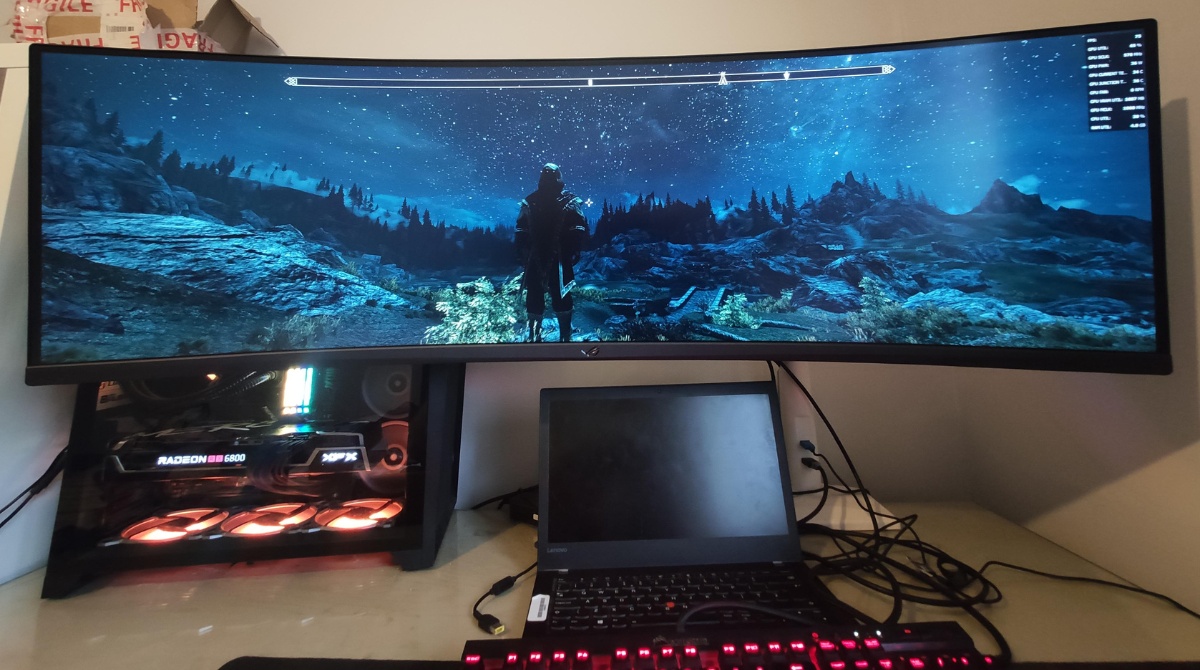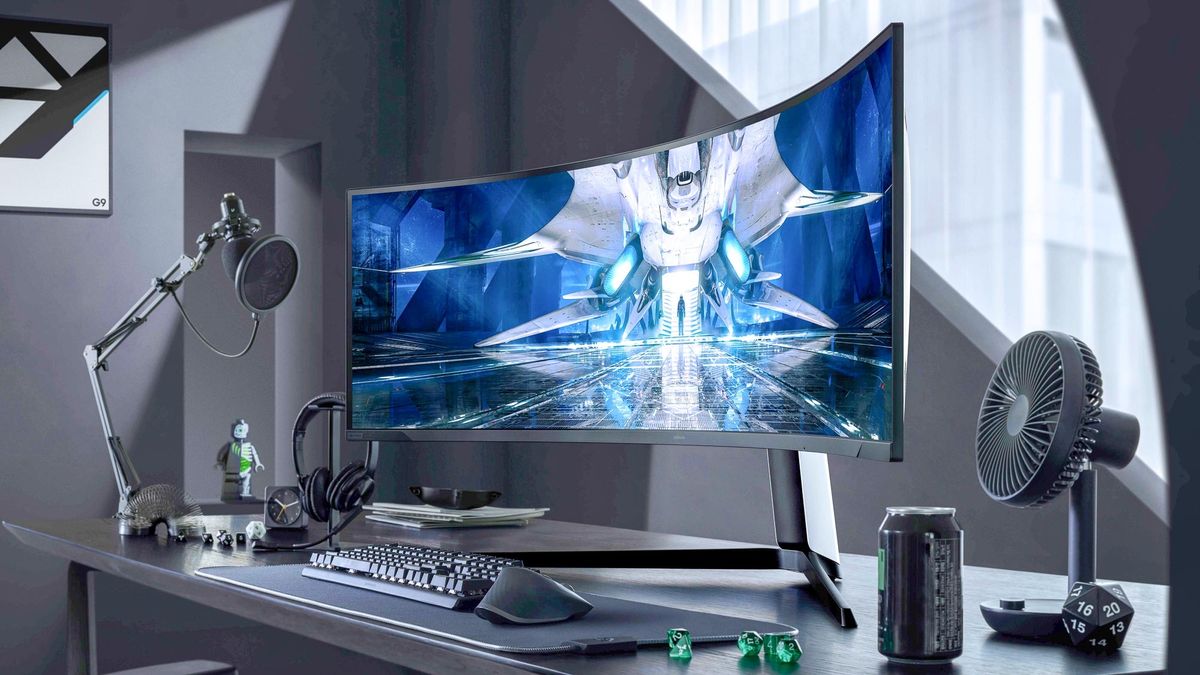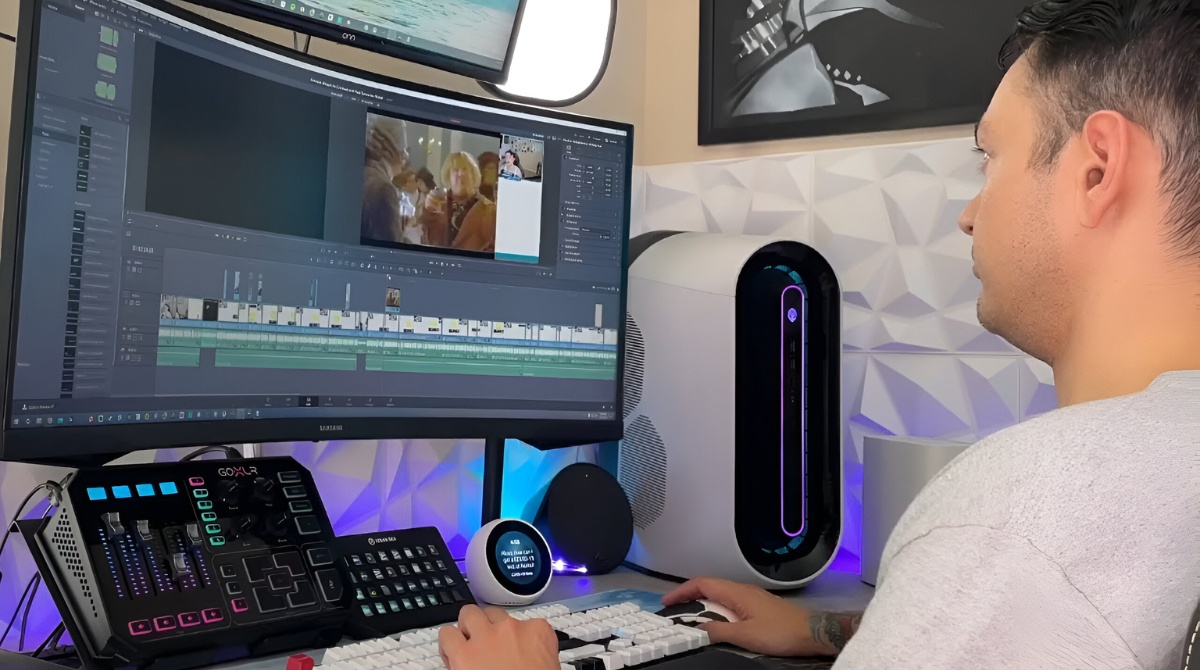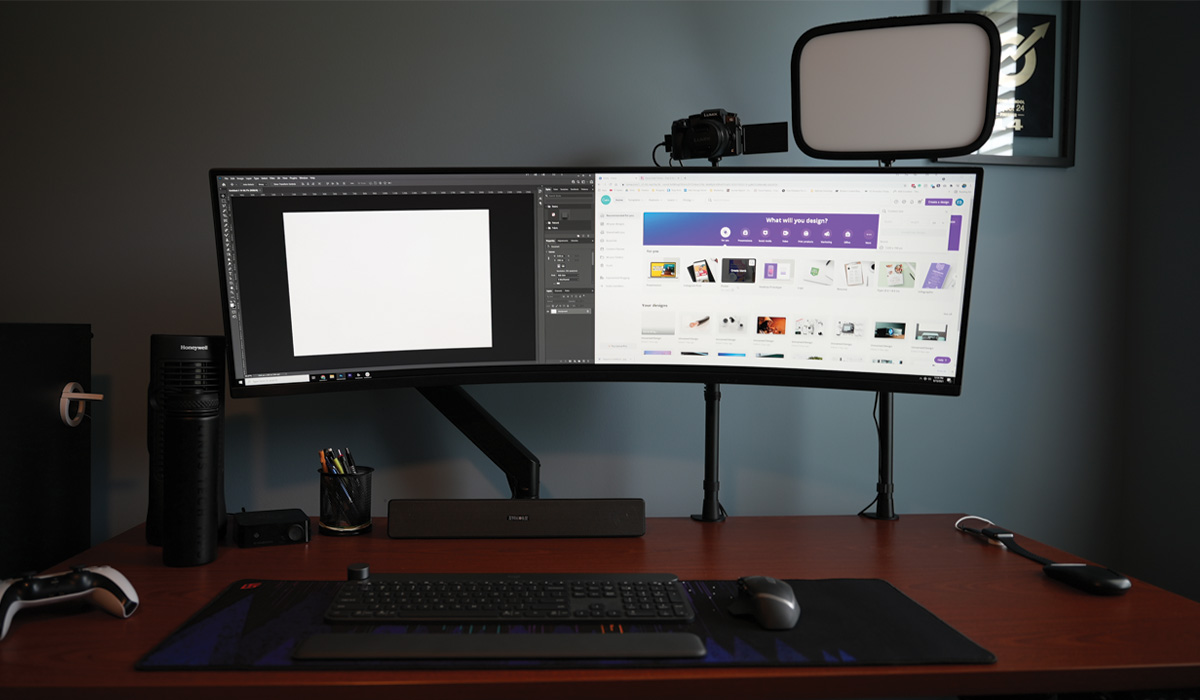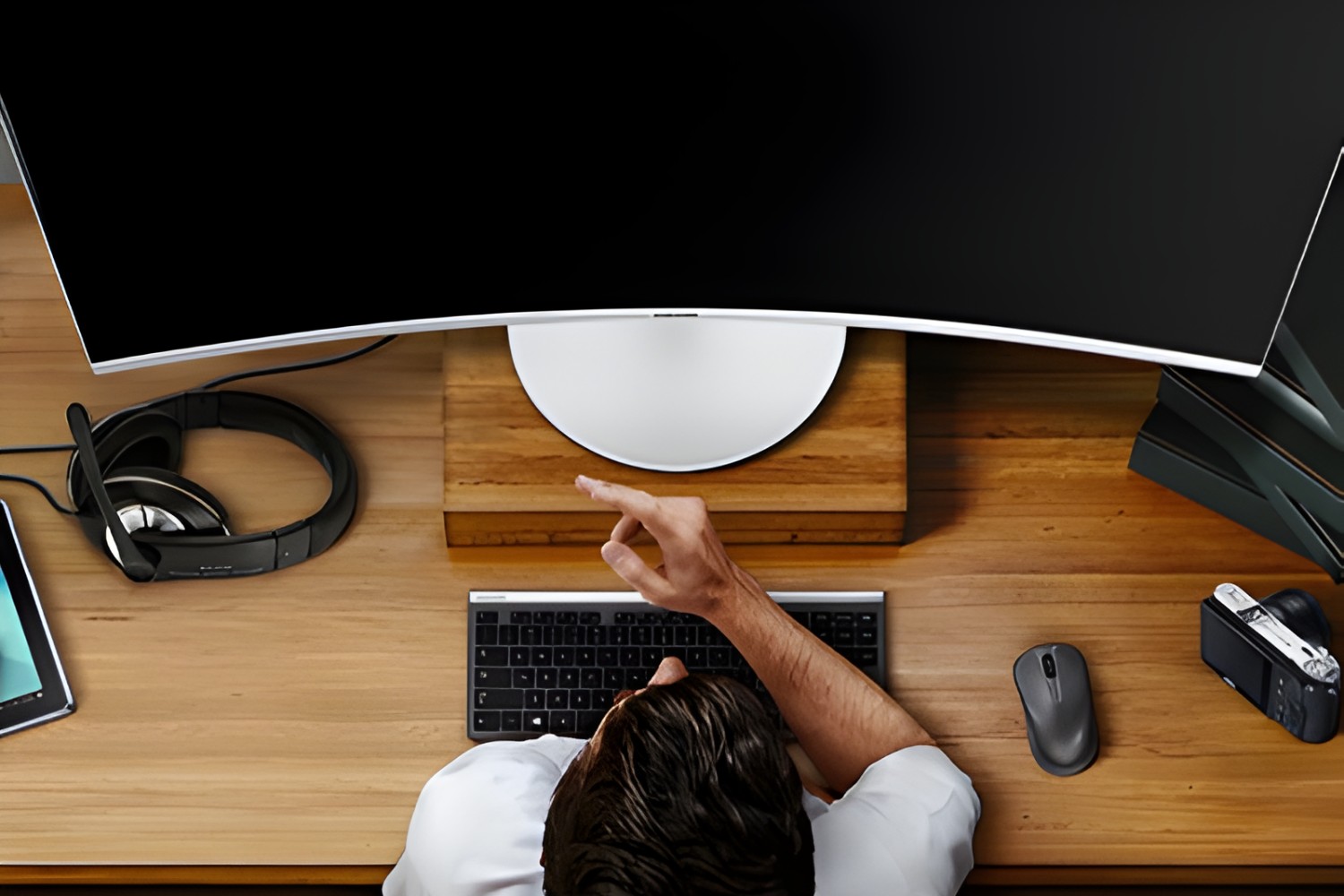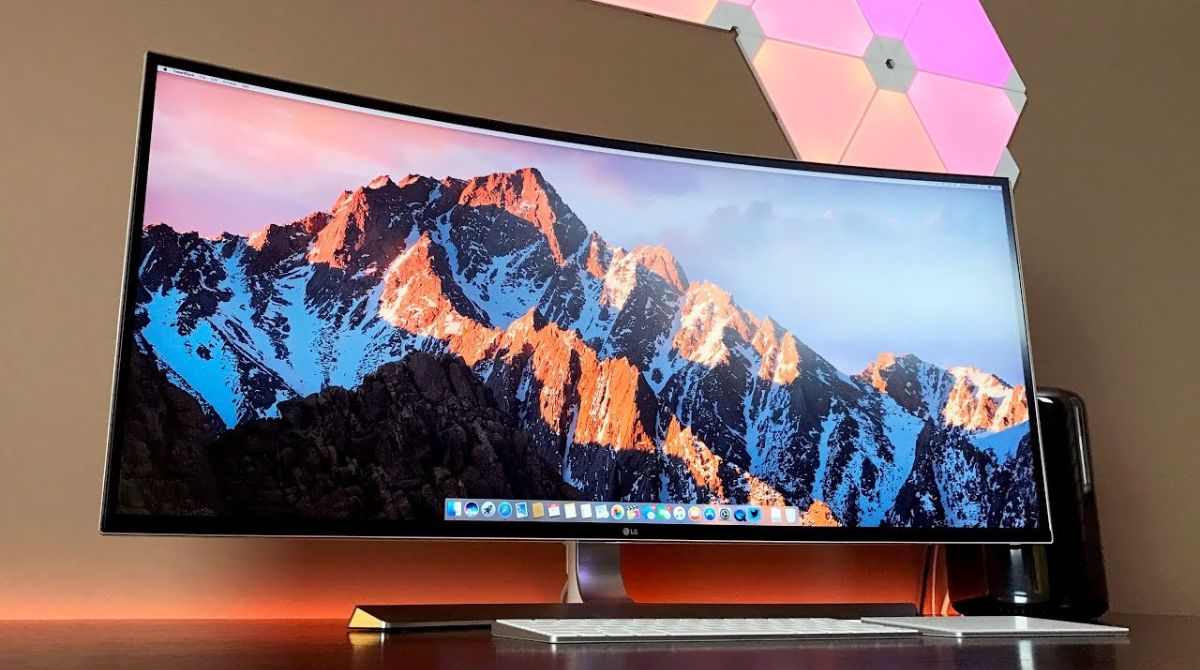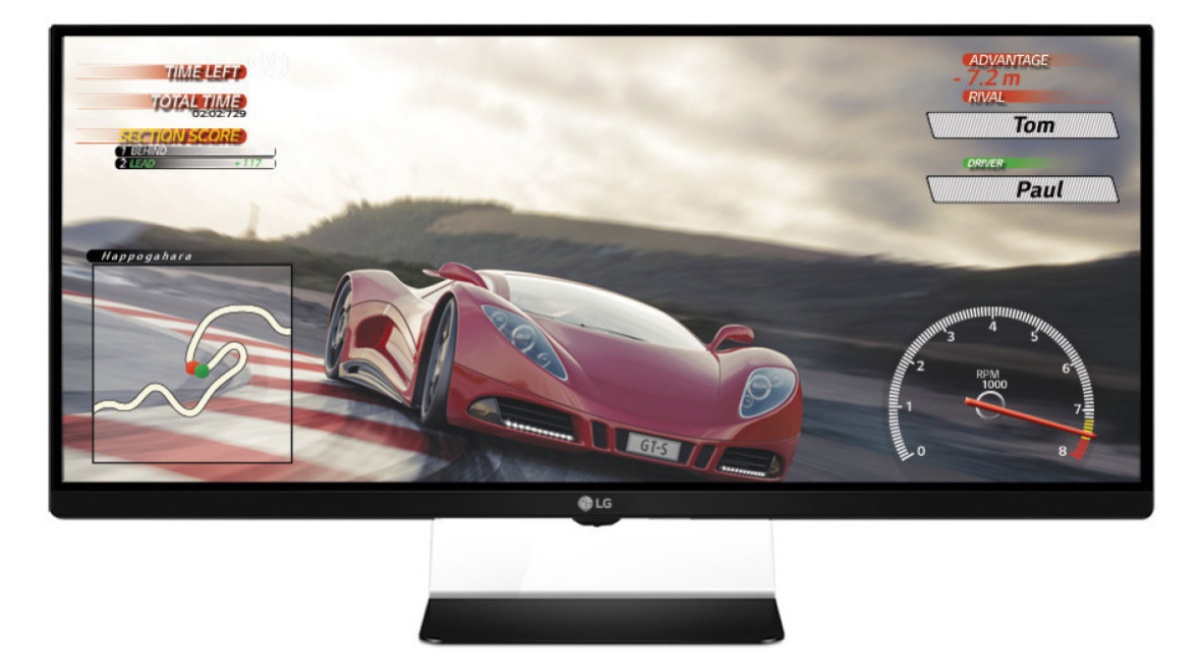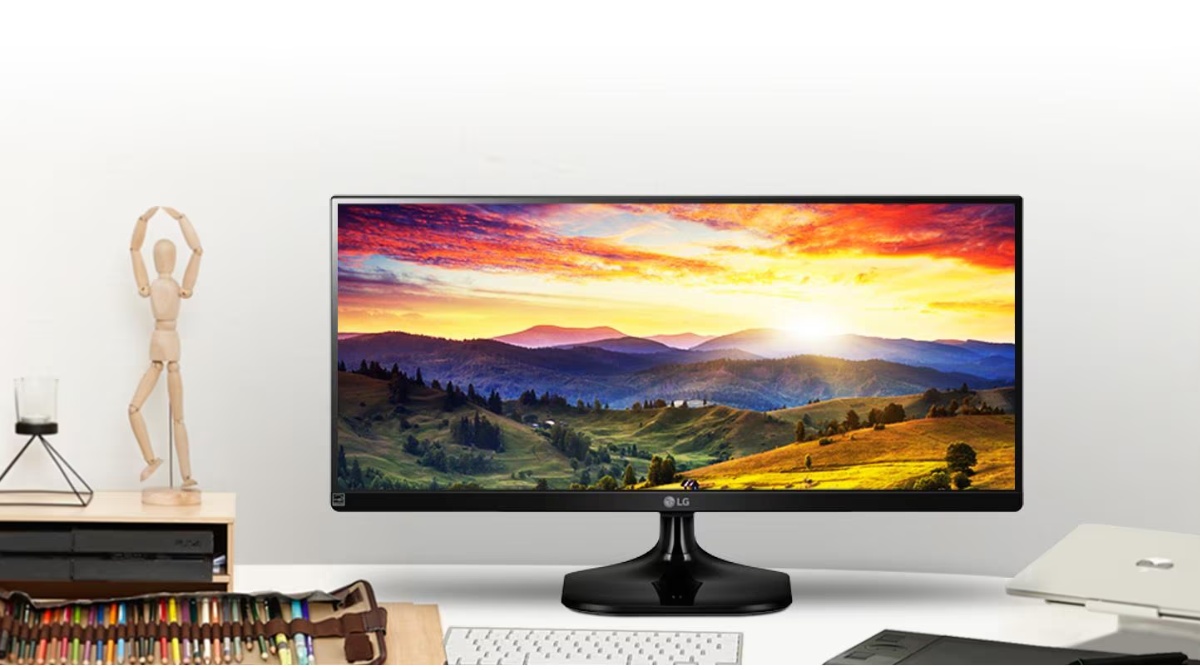Introduction
Ultrawide monitors have gained popularity in recent years due to their immersive and expansive display. With their wider aspect ratio, these monitors offer a unique viewing experience, especially for tasks like gaming, video editing, and graphics design.
If you’re considering upgrading to an ultrawide monitor, it’s important to ensure that your computer is capable of running it smoothly. This involves checking various aspects of your computer’s hardware and software compatibility. In this article, we will guide you through the necessary steps to determine if your computer can support an ultrawide monitor.
We will start by understanding the basics of ultrawide monitors and their benefits. Then, we will move on to check your computer’s graphics card capabilities, display outputs, operating system compatibility, and resolution support. Additionally, we will discuss how to calculate the required graphics card power and consider any additional hardware requirements. Finally, we will explore how to adjust your computer’s settings to optimize the ultrawide monitor experience.
By the end of this article, you will have a clear understanding of whether your computer can run an ultrawide monitor and what steps you may need to take to optimize your system for this enhanced display.
Understanding Ultrawide Monitors
Ultrawide monitors are a type of display that boasts a wider aspect ratio compared to traditional monitors. Instead of the standard 16:9 ratio, ultrawide monitors typically have a 21:9 or 32:9 aspect ratio. This wider screen real estate allows for a more immersive viewing experience, as it fills your peripheral vision and provides a wider field of view.
One of the main advantages of ultrawide monitors is their ability to enhance multitasking productivity. With the extra horizontal space, you can have multiple windows side by side, making it easier to work on multiple documents, spreadsheets, or applications simultaneously. This can greatly optimize your workflow and minimize the need for constantly resizing or switching between windows.
Besides productivity, ultrawide monitors are particularly popular among gamers and content creators. The wider aspect ratio in gaming offers a more immersive gaming experience, allowing you to see more of the game world without the visibility limitations of standard monitors. Additionally, content creators benefit from the expanded workspace, as it provides more screen real estate for editing videos, designing graphics, and arranging multiple editing tools and panels.
It’s important to note that not all content is optimized for ultrawide displays. While most modern games and multimedia applications support ultrawide resolutions, some older games and certain software may not natively adapt to the wider aspect ratio. In these cases, you may experience black bars on the sides of the screen or stretched images. However, many ultrawide monitors come with features like aspect ratio scaling and screen splitting, which can help with compatibility and allow you to enjoy a wide range of content.
Before investing in an ultrawide monitor, it’s crucial to understand your specific needs and use cases. Consider the activities you primarily engage in, whether it’s gaming, productivity work, content creation, or a combination of these. This will help you determine whether the features and benefits of an ultrawide monitor align with your requirements.
Checking Your Computer’s Graphics Card
One of the first things to consider when determining if your computer can run an ultrawide monitor is the capability of your graphics card. The graphics card is responsible for rendering and displaying images on your monitor, so it plays a crucial role in ensuring smooth performance and compatibility with ultrawide resolutions.
To check your graphics card, you can follow these steps:
- Open the Start menu and search for “Device Manager.”
- Click on the “Device Manager” result to open it.
- In the Device Manager window, expand the “Display adapters” category.
- Your graphics card(s) will be listed under this category. Take note of the model and manufacturer.
Once you have identified your graphics card, you need to check its specifications and compatibility with ultrawide displays. Visit the manufacturer’s website or search for the model to find the detailed specifications of your graphics card. Look for information such as the maximum supported resolution, display output options, and the recommended system requirements for ultrawide monitors.
If your graphics card supports DisplayPort 1.2 or HDMI 2.0, it is likely capable of driving an ultrawide monitor. These interfaces can handle the higher bandwidth required for the increased pixel count of ultrawide resolutions.
In some cases, if your graphics card does not have the necessary outputs or capabilities, you may still be able to run an ultrawide monitor by using an adapter or upgrading your graphics card to a more powerful model. However, it’s important to verify compatibility and ensure that your computer’s power supply and cooling system can handle the increased demands of a more powerful graphics card.
Remember that while your graphics card is an essential component, other factors such as your computer’s operating system, resolution support, and additional hardware requirements also play a role in determining if your computer can effectively run an ultrawide monitor.
Checking Your Computer’s Display Outputs
In addition to your graphics card’s capabilities, it’s crucial to ensure that your computer has the appropriate display outputs to connect an ultrawide monitor. The display outputs determine the types of cables and connections you can use to connect your monitor to your computer.
Most modern ultrawide monitors utilize either a DisplayPort or HDMI connection. These connections support the high bandwidth necessary for ultrawide resolutions. To determine the available display outputs on your computer, follow these steps:
- Inspect the back panel of your computer tower or the sides of your laptop. Look for the available ports specifically labeled as DisplayPort or HDMI.
- If you have a dedicated graphics card, inspect the back of the card for these ports. Note that your computer may also have display outputs integrated into the motherboard, so check both locations.
If your computer does not have a DisplayPort or HDMI output, it may still be possible to connect an ultrawide monitor using alternative connections such as DVI or VGA. However, these connections may not support the high resolutions and refresh rates necessary for optimal performance on an ultrawide monitor.
It’s worth noting that some ultrawide monitors require specific display outputs to utilize their full capabilities. For instance, some monitors may require a display output that supports a certain version of DisplayPort or HDMI for features like G-Sync or FreeSync compatibility.
If your computer does not have the necessary display outputs, you may need to use an adapter or consider upgrading your graphics card. However, as mentioned earlier, it is important to check compatibility and consider the power supply and cooling requirements of a more robust graphics card.
By ensuring that your computer has the appropriate display outputs, you can confidently connect your ultrawide monitor and enjoy its immersive display without any compatibility issues.
Checking Your Computer’s Operating System
Another important aspect to consider when determining if your computer can support an ultrawide monitor is the compatibility of your operating system. Different operating systems have varying levels of support for ultrawide resolutions and may require specific drivers or settings to optimize the display.
To check your operating system’s compatibility with ultrawide monitors, follow these steps:
- On a Windows computer, right-click on the desktop and select “Display settings.” On a Mac, go to “System Preferences” and click on “Displays.”
- In the display settings, check if your operating system recognizes the ultrawide monitor and offers the correct resolution options. Look for the ultrawide resolutions, such as 2560×1080 or 3440×1440, which are commonly used for ultrawide monitors.
- If the desired resolution is not listed, it could indicate that your operating system does not natively support ultrawide resolutions. However, this does not necessarily mean that your ultrawide monitor will not work. Many monitors come with their own display drivers that you can install to ensure compatibility.
In some cases, you may need to update your graphics card drivers, firmware, or operating system itself to ensure proper functionality with an ultrawide monitor. Check the manufacturer’s website for the latest drivers and updates specific to your setup.
It’s also worth noting that certain operating systems, such as Windows 10, have built-in features for managing ultrawide displays, such as snapping windows to specific regions of the screen or customizing taskbar settings. Exploring these features can enhance your productivity and overall experience with an ultrawide monitor.
Before purchasing an ultrawide monitor, make sure to check the system requirements specified by both the monitor manufacturer and your operating system. This will ensure that your computer is capable of fully utilizing the ultrawide monitor and its features.
By checking your computer’s operating system compatibility and ensuring you have the necessary drivers and settings, you can optimize your ultrawide monitor experience and enjoy its immersive display to the fullest.
Checking Your Computer’s Resolution Support
One of the critical factors to consider when determining if your computer can handle an ultrawide monitor is its resolution support. Ultrawide monitors typically have higher resolutions compared to standard monitors, requiring your computer to be able to handle these increased pixel counts.
Here’s how you can check your computer’s resolution support:
- Right-click on the desktop and select “Display settings” (on Windows) or go to “System Preferences” and click on “Displays” (on Mac).
- In the display settings, find the resolution options available for your monitor. Look for ultrawide resolutions such as 2560×1080, 3440×1440, or 5120×1440, depending on the specific ultrawide monitor you are considering.
- If the desired ultrawide resolution is not listed, it may indicate that your computer’s graphics card or operating system does not support it. However, this doesn’t mean your ultrawide monitor won’t work. It may still be possible to manually set a custom resolution, but keep in mind that this can affect the visual quality and performance.
In addition to resolution support, you should also consider the refresh rate supported by your computer. Ultrawide monitors often offer higher refresh rates, such as 144Hz or 240Hz, which can provide smoother motion and better gaming experience. Ensure that your computer’s graphics card and connection cables are capable of handling these higher refresh rates to fully enjoy the benefits of an ultrawide monitor.
It’s important to note that running an ultrawide monitor at its native resolution requires more graphics processing power compared to a standard monitor. Ensure that your computer meets the minimum system requirements specified by the monitor manufacturer to avoid any performance issues.
If your computer’s graphics card or operating system does not support the desired ultrawide resolutions or refresh rates, you may need to consider upgrading these components to fully utilize the capabilities of an ultrawide monitor. However, keep in mind that upgrading hardware may also require adjustments in your computer’s power supply and cooling system.
Taking into account your computer’s resolution support and refresh rate compatibility will ensure that you can maximize the potential of your ultrawide monitor and enjoy a stunning visual experience.
Calculating the Required Graphics Card Power
When considering an ultrawide monitor, it’s crucial to ensure that your computer’s graphics card has enough power to handle the increased demands of driving a higher resolution display. Insufficient graphics card power can result in lag, stuttering, and overall poor performance.
To calculate the required graphics card power for an ultrawide monitor, you need to consider a few factors:
- Ultrawide Resolution: Determine the specific ultrawide resolution of the monitor you plan to use, such as 2560×1080 or 3440×1440.
- Frame Rate: Consider the desired frame rate you want to achieve. Higher frame rates provide smoother motion, especially in gaming, but also require more graphics processing power.
- Game or Application Requirements: If you primarily use your computer for gaming or demanding applications, check the recommended system requirements for those specific games or software. This will give you an idea of the minimum graphics card power needed to run them smoothly.
With these factors in mind, you can estimate the required graphics card power by researching specific graphics cards and comparing their performance benchmarks. Look for graphics card models that are known to handle the resolution and frame rate you desire.
It’s important to check the manufacturer’s specifications for each graphics card. This includes the recommended power supply wattage and any additional power connectors required, such as 6-pin or 8-pin PCIe power connectors.
As a general rule of thumb, for 1080p ultrawide resolutions, a mid-range graphics card should suffice. However, for higher resolutions like 1440p or 4K ultrawide displays, you may need a higher-end graphics card with more power.
Keep in mind that graphics card power requirements can vary based on the specific model, cooling solution, and additional features like overclocking. It’s always best to err on the side of caution and select a more powerful graphics card to ensure optimal performance and future-proofing.
If you’re unsure about the required graphics card power or want professional advice, consult with a computer hardware specialist who can provide personalized recommendations based on your specific needs and budget.
Calculating the required graphics card power will help you choose a suitable graphics card that can handle the demands of driving an ultrawide monitor, ensuring a smooth and visually impressive experience.
Considering Additional Hardware Requirements
While the graphics card is a crucial component for running an ultrawide monitor, there are other hardware considerations to keep in mind to ensure optimal performance and compatibility.
Here are some additional hardware factors to consider:
- Processor (CPU): A powerful CPU is essential for handling the increased demands of running resource-intensive tasks on an ultrawide monitor, such as gaming, video editing, or 3D rendering. Make sure your CPU can keep up with these demands without causing bottlenecks in performance.
- RAM: Sufficient RAM is necessary to handle the increased workload of running multiple applications or large files on an ultrawide monitor. Aim for at least 8GB of RAM for smoother multitasking, but consider upgrading to 16GB or higher if you frequently work with memory-intensive tasks.
- Storage: Consider the storage capacity and speed of your storage drive(s). Ultrawide monitors are often used for multimedia tasks, which require ample storage space for storing large video files or game installations. Additionally, using a solid-state drive (SSD) can significantly improve loading times and overall system responsiveness.
- Power Supply: Upgrading to an ultrawide monitor may require a more substantial power supply to handle the increased demands of your computer components. Check the power requirements of your graphics card and ensure that your power supply unit (PSU) has enough wattage to support the entire system without straining it.
- Cooling: Higher-end graphics cards and CPUs tend to generate more heat, especially during intense gaming or heavy workload sessions. Make sure your computer has adequate cooling solutions, such as fans or liquid cooling systems, to maintain optimal temperatures and prevent overheating.
These additional hardware requirements will depend on your specific use case and the intensity of the tasks you perform on your computer. Understanding these requirements and ensuring your hardware is up to par will help prevent performance issues and maximize the potential of your ultrawide monitor.
If you’re unsure about the compatibility of your current hardware or need assistance in upgrading your components, consult with an experienced computer technician or hardware specialist who can provide tailored recommendations based on your specific needs and budget.
By considering the additional hardware requirements, you can ensure that your computer is equipped with the necessary components to fully support the power and performance demands of an ultrawide monitor.
Adjusting Your Computer’s Settings for Ultrawide Monitors
Once you have confirmed that your computer can support an ultrawide monitor, it’s important to optimize your computer’s settings to ensure the best possible experience with your new display.
Here are some key settings to consider when adjusting your computer for an ultrawide monitor:
- Resolution: Set the display resolution to the native resolution of your ultrawide monitor. This will ensure that you are utilizing the full screen real estate and experiencing the intended clarity and sharpness of the display.
- Scaling: Adjust the display scaling settings to ensure that text and objects are rendered at a comfortable size. Depending on your screen size and personal preference, you may want to increase or decrease the scaling factor to achieve optimal readability and usability.
- Split Screen and Multitasking: Take advantage of the extra horizontal space by utilizing split-screen multitasking features available in your operating system or third-party software. This allows you to have multiple applications or windows open side by side, enhancing productivity and workflow efficiency.
- Gaming Settings: If you plan on gaming on your ultrawide monitor, adjust the game settings to support the wider aspect ratio. Many modern games have built-in support for ultrawide resolutions, but some older or less optimized titles may require additional tweaks or the use of third-party mods or software to properly scale the image.
- Color and Contrast: Calibrate the color and contrast settings of your monitor to achieve accurate and pleasing visuals. You can use built-in calibration tools in your operating system or utilize third-party calibration software and hardware devices for more precise adjustments.
- Refresh Rate: Depending on your monitor’s capabilities, ensure that you have set the desired refresh rate in your display settings. Higher refresh rates, such as 144Hz or 240Hz, can provide smoother motion and reduce motion blur, resulting in a more immersive and enjoyable experience, especially for gaming.
It’s worth exploring the settings and features specific to your ultrawide monitor as well. Many monitors offer additional customization options, such as picture modes, color profiles, and gaming-specific settings, which can further enhance your viewing experience.
Remember to consult the user manual or the manufacturer’s website for specific instructions on adjusting settings for your ultrawide monitor model. They may provide additional tips and recommendations for getting the most out of your display.
By fine-tuning your computer’s settings to accommodate the larger and wider aspect ratio of an ultrawide monitor, you can optimize your workflow, gaming experience, and visual enjoyment.
Conclusion
In conclusion, determining if your computer can run an ultrawide monitor requires assessing various factors related to your hardware and software compatibility. Understanding the benefits and considerations of ultrawide monitors is the first step towards making an informed decision.
Checking your computer’s graphics card capabilities, display outputs, operating system compatibility, and resolution support is essential to ensure smooth performance and optimal compatibility with an ultrawide monitor. Calculating the required graphics card power and considering additional hardware requirements, such as a powerful CPU, sufficient RAM, and appropriate cooling, is crucial for a seamless and immersive experience.
Once your computer is prepared, adjusting the settings for the ultrawide monitor is necessary to fully unlock its potential. Setting the correct resolution, scaling, and utilizing split-screen multitasking features can enhance productivity and usability. Additionally, optimizing gaming settings, calibrating color and contrast, and maximizing refresh rates can enhance your visual experience in gaming and multimedia tasks.
While the process of determining if your computer can handle an ultrawide monitor requires thorough research and consideration, the benefits of a wider aspect ratio and immersive display make it worth the effort. Whether you’re a gamer, content creator, or productivity enthusiast, an ultrawide monitor can elevate your computing experience.
Remember to consult the specific system requirements of the ultrawide monitor and seek expert advice or assistance if needed. By ensuring that your computer meets the necessary criteria, you can confidently invest in an ultrawide monitor and enjoy the benefits of its expansive and immersive display.









